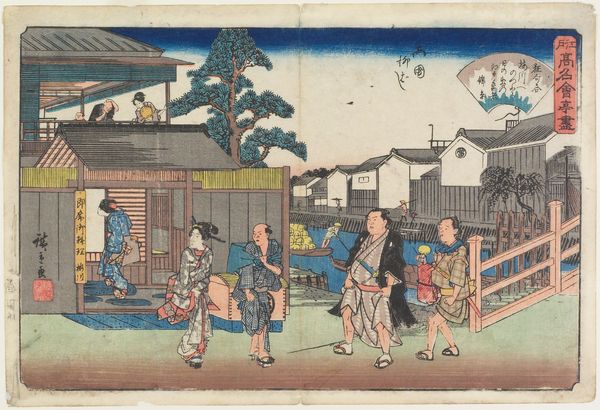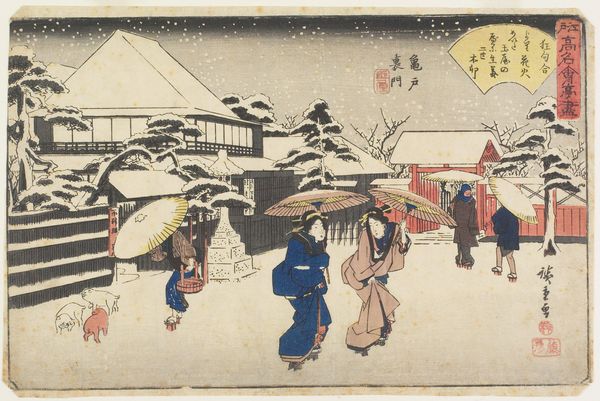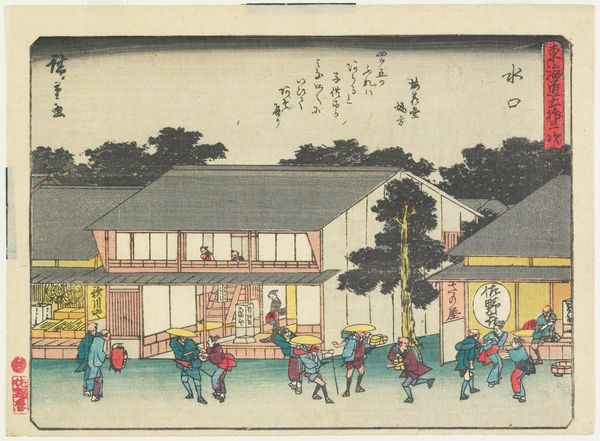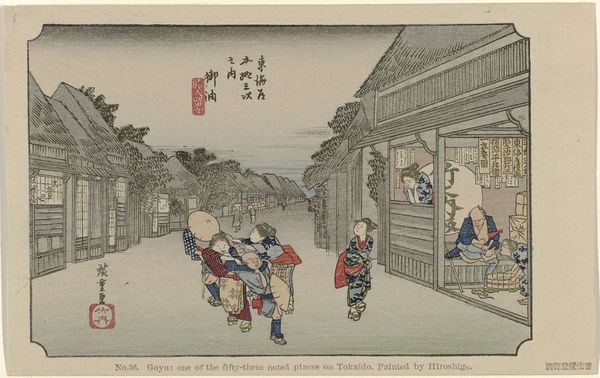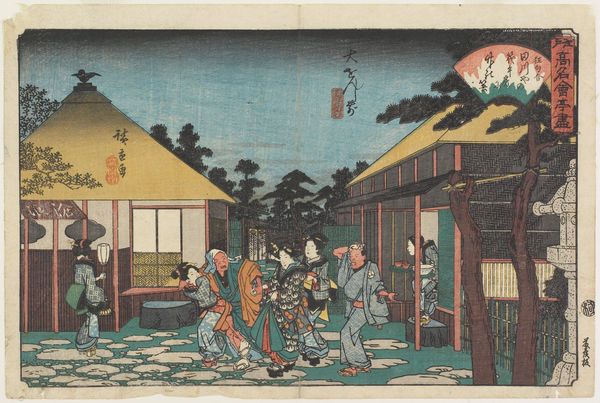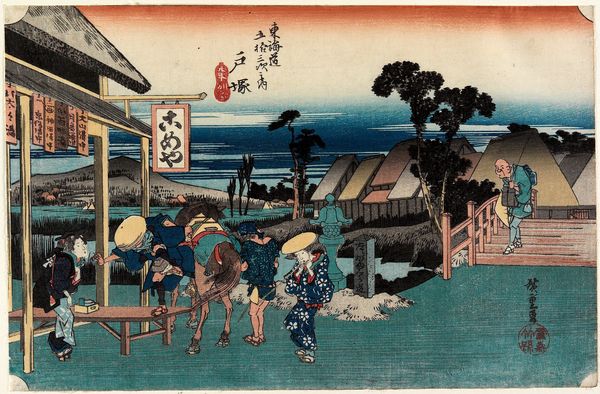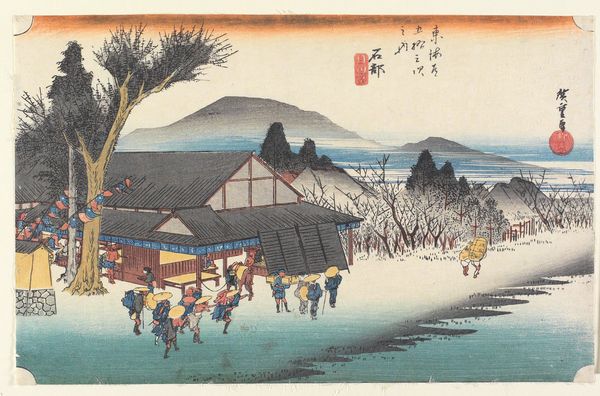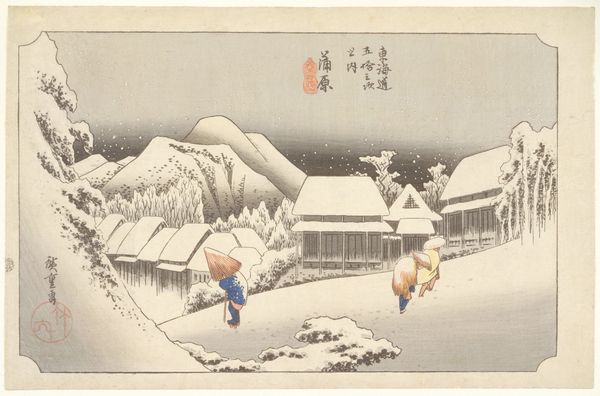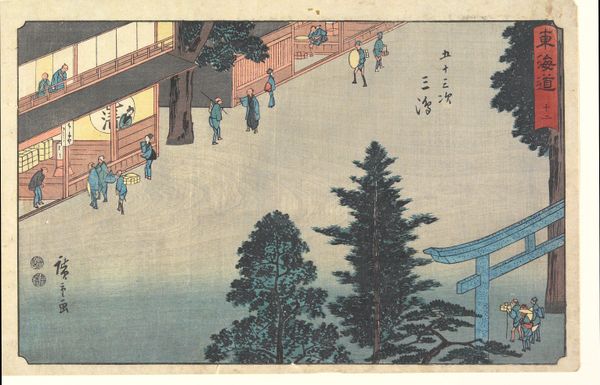
print, ink, woodblock-print
#
narrative-art
# print
#
asian-art
#
landscape
#
ukiyo-e
#
figuration
#
ink
#
woodblock-print
#
cityscape
Dimensions: 9 13/16 × 14 5/16 in. (24.9 × 36.4 cm) (sheet, horizontal ōban)
Copyright: Public Domain
Curator: Before us is Utagawa Hiroshige’s woodblock print, "Goyu," created around 1832-1833, part of the series "Fifty-three Stations of the Tōkaidō," and currently residing here at the Minneapolis Institute of Art. Editor: Immediately, I notice the composition. The horizontal street stretching into the distance draws my eye, and there's a sense of quiet bustle. It’s fascinating how Hiroshige uses simple lines and color to convey the texture of everyday life. Curator: Precisely! It’s essential to understand that ukiyo-e prints like "Goyu" weren't simply decorative objects. They were a form of mass media, reaching a wide audience with affordable imagery depicting scenes from daily life and famous landmarks. Editor: Right, and the subject itself… a bustling scene of travelers being transported. Look at the laborers, almost collapsing under the weight, in contrast to the lounging travelers. We can't ignore how such scenes subtly showcase the societal and class structure present in Edo-period Japan, or the physical burden of laboring classes propping the luxury of the others. Curator: Absolutely. Hiroshige was masterfully catering to a market eager for images reflecting their own world and desires. Consider the materials and the printmaking process— the careful carving of woodblocks, the layering of inks, the paper itself sourced from specific mills… these choices all speak to the artistry involved. Ukiyo-e print was not regarded as art at that time, since artmaking practice centered around a strict division of labor: artists designing and workshops reproducing through labor of carving and printing to serve certain segments of population with popular, mass reproducible products, very much like printed media today. Editor: And it speaks to how artistic skill can democratize representation, providing a visual record available beyond the elite classes. The perspective invites the viewer in. It really makes you consider the institutions supporting Hiroshige, enabling his access to the landscape and then shaping how these scenes are presented and consumed. The print industry helped create that very imagery to market these attractions to larger population segments. Curator: A nuanced observation. We must acknowledge the complex relationship between the artist, the publisher, and the consumer in shaping the cultural significance of this work. "Goyu" is both a beautiful print and a compelling document of its time. Editor: It definitely goes beyond just a landscape scene; it gives insights into how labor, tourism, and media shaped the way people saw and understood their world in that time.
Comments
No comments
Be the first to comment and join the conversation on the ultimate creative platform.

